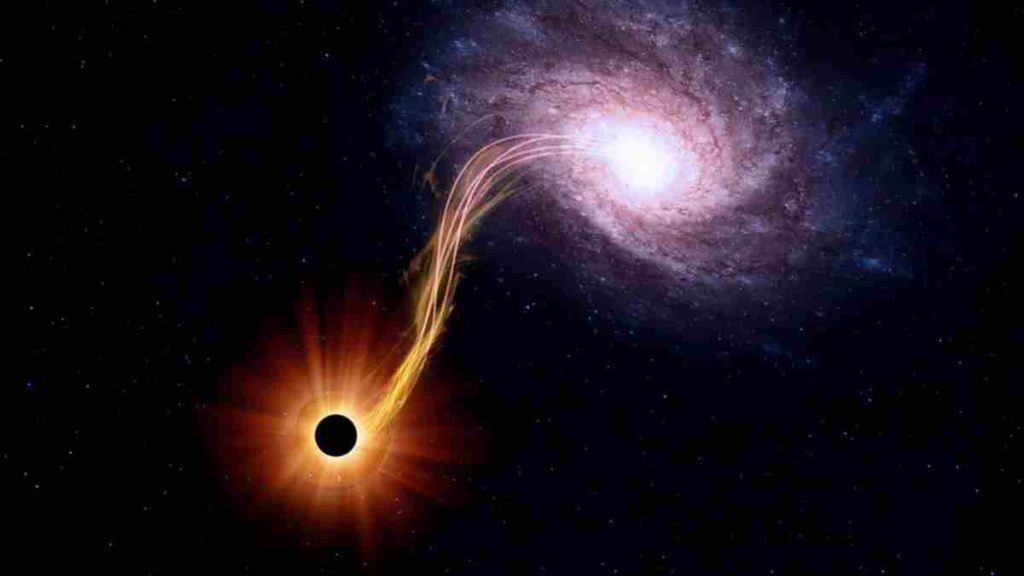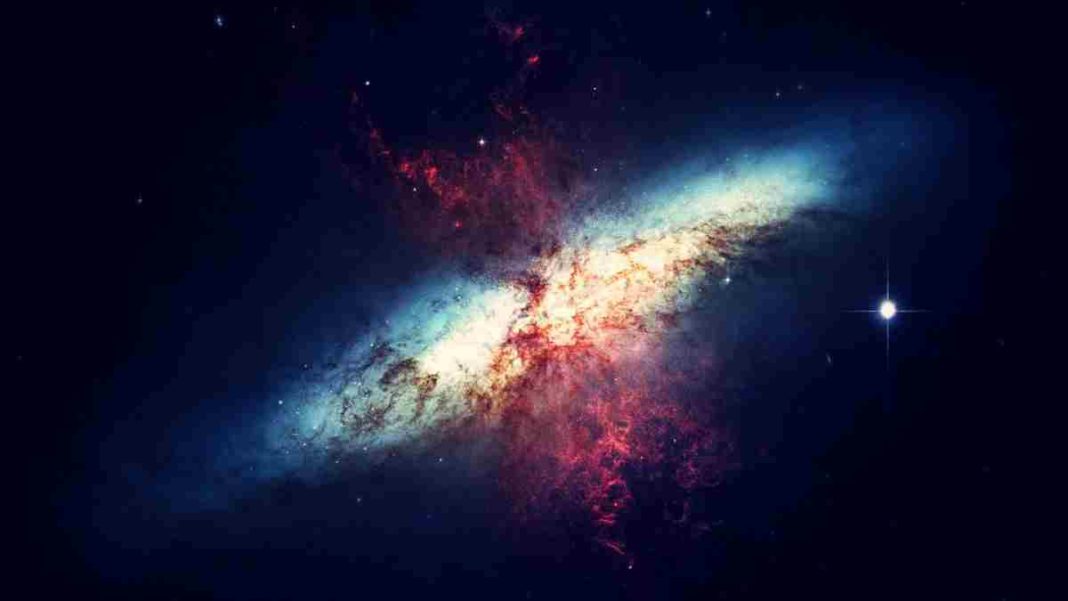UNITED STATES: A new study led by Northwestern University has found that intermediate-mass black holes, if they exist, devour wayward stars like messy toddlers, taking a few bites and then flinging the remains across the galaxy. In new 3D computer simulations, astrophysicists modelled black holes of varying masses and hurled stars past them to see what might happen.
Initially, when a star approaches an intermediate-mass black hole, it gets captured in the black hole’s orbit. Once the black hole catches the star in its deadly orbit, it begins its lengthy and violent meal. Every time the star completes a lap, the black hole takes a bite, further cannibalizing it with each passage.

Eventually, the black hole consumes everything except the star’s incredibly dense core. Then, the black hole ejects the remains, and the star’s remnant flies across the galaxy. The new simulations also provide astronomers with new clues to finally pinpoint these hidden giants within our night sky.
Northwestern’s Fulya Kıroğlu, who led the study, said that the team obviously could not observe black holes directly because they don’t emit light. Instead, the team looked at the interactions between black holes and their environments.
The team found that stars undergo multiple passages before being ejected. After each pass, the stars lose more mass, causing a flair of light as it’s ripped apart.
Each flare is brighter than the previous, creating a signature that can help astronomers discover them. While astrophysicists have proven the existence of lower- and higher-mass block holes, intermediate-mass black holes have eluded them.
Created when supernovae collapse, stellar remnant black holes are about three to ten times the solar mass of our sun.
On the other end of the spectrum, supermassive black holes, which lurk in the centres of galaxies, are million to billion times the mass of our sun.
If they exist, intermediate-mass black holes would be 10 to 10,000 times more massive than stellar remnant black holes but not nearly as huge as supermassive black holes.
Although these intermediate-mass black holes should exist theoretically, astrophysicists have not found indisputable observational evidence.
The study led by Kıroğlu and her team developed new hydrodynamic simulations. First, they created a model of a star consisting of many particles.
Then, the team sent the star toward the black hole and calculated the gravitational force acting on the particles during the star’s approach.
Through the simulations, Kıroğlu and her team observed that stars could orbit an intermediate-mass black hole as many as five times before finally being ejected.
With each pass around the black hole, the star loses mass as it’s ripped apart.
Then, the black hole throws the leftovers back out into the galaxy at extremely high velocities.
The repeating pattern would create a stunning light show that could help astronomers identify and prove the existence of intermediate-mass black holes.
“It’s amazing that the star isn’t fully ripped apart,” Kıroğlu remarked. He added that certain stars might get lucky and survive the event.
The ejection speed of the stars is so high that the team identified them as hyper-velocity stars, which astronomers have observed at the centres of galaxies.
Next, Kıroğlu plans to simulate different types of stars, including giant and binary stars, to explore their interactions with black holes.
Also Read: NASA Discovers Rapidly Moving Supermassive Black Hole Triggering Star Formation



